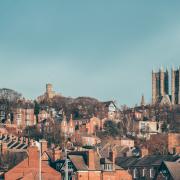Lancashire and Yorkshire have a shared history in the life of the Leeds-Liverpool canal which is 200 years old this year. We take a look at some of the highlights along the route.

The Leeds Liverpool canal is the longest canal in Britain built as a single waterway and snakes through the northern heartlands of the Industrial Revolution.
The signposts of history, engineering excellence and the working life of people from the past are all still visible along the 127 mile route.
In the interest of fairness, we’ve picked five locations from each side of Lancashire and Yorkshire.

Leeds
Emergence of Leeds as an industrial powerhouse was one of the reasons for the creation of the Leed-Liverpool canal. Although the town, as it was in the 1800’s, was well served by the transportation links of the River Aire, the canal allowed Leeds to trade on on a much wider scale.
The around around the train station and the Granary Wharf shopping centre isclose to the location of the Leeds-Liverpool canal terminus. You can still find architecural clues from that era with the ’dark arches’ tunnel complex that elevates the station above the canal and the river.

Kirkstall
The Kirkstall Brewery started operations a few years after the completion of the canal to take advantage of the transport links available to businesses situated so close to the waterways.
These days the buildings serve as student accomodation for the Leeds Metropolitan University, but there are still remnants of the past visible. On the west side of the canal, which was formerly the Brewery warehouse, it is possible to see the doors just above the water level that were used to load barrels of beer onto barges.

Saltaire
The existence of Saltaire owes a great deal to the building of the Leeds-Liverpool Canal, forty years prior. In 1851 Sir Titus Salt moved his wool business to a custom made village just outside Shipley.
The village had housing for his mill workers and excellent transport links due to the Leeds-Liverpool Canal, the Midland Railway and the River Aire after which his village was named ‘Salt-Aire’. Such is the importance of Saltaire in the narrative of the Industrial Revolution it was designated a World Heritage Site by UNESCO in 2001.

Bingley Five Locks
Arguably the most impressive feats of engineering on the Leeds-Liverpool canal, the five-rise locks near Bingley is one of the earliest parts of the canal network to completed and is now a Grade 1 listed structure.
Built in 1774 it is the steepest flight of locks in the UK, with a gradient of about 1:5 (a rise of 60 ft over a distance of 320 ft).

East Marton
The quirky and ingenious engineering continues just outside of Skipton in the village of East Marton.
The A59 road that connects Liverpool and York and crosses the canal at East Marton, near the The Cross Keys Inn, the original packhorse bridge was much lower than the new road so a second arch was added to mainatin the level of the road.

Wheelton
The Johnson’s Hillock Locks is a series of seven locks on the Leeds and Liverpool Canal, the Top Lock pub sits alongside Lock 58.
The old Canal Mill sits by the side of the canal and was converted to the Botany Bay Shopping Mill in the mid nineties. Wheelton is also the location of Canal Boat Cruises, who organise regular trips along the local waterways.

Burscough
Burscough was once an important part of the Lancashire canal network and the wharf was vital to much of the traffic on the Leeds/Liverpool canal. The Wharf Buildings included stables, canal cottage, weighbridge, provender and chop house, barns, warehouse, harness rooms, offices and a veterinary centre for the horses that pulled barges along the canal.
In 2011 a multi-million pound regeneration project transformed the Wharf into a retail and leisure development with a whole range of business from arts and craft to food shops.

Burnley
The The Weavers’ Triangle was area that allowed Burnley to become one the biggest cotton producing towns in the world and saw its population boom in the space of a few decades. The canal did not only provide tranportation for goods but also allowed the mills to draw water to power their steam powered engines.
Just to the north of Burnley’s centre, in between junctions 10 and 11 of the M65, the canal maintains its route over the top of the motorway via the Whittlefield Bridge Aqueduct No 31a.

Wigan
Wigan Pier gained fame by inspiring the titles of George Orwell’s book on the study of the life of working class northerners in ‘The Road to Wigan Pier. The pier itself was actually a jetty located on the side of the warehouses that allowed coal to be loaded easily on the tranportation barges.
Ironically, as the use of the area for industry and tranportation waned, the pier did evolve into something of a leisure complex with a museum on Victorian life and a nightclub amongst the visitor attractions.

Liverpool
The Leeds-Liverpool was built to give the mills of Yorkshire access to the Port of Liverpool and potentially markets much further afield, while the shipping businesses gained access to the fuel supply from the collieries across the Pennines.
Many of the docks and warehouses that were a large part of the Leeds-Liverpool canal economy have now been redeveloped into housing and offices. The final point on the waterway was Stanley Dock until a 2009 redevelopment extended the canal system to Canning Dock.
Our readers across Lancashire, Yorkshire and Merseyside have found the canal to be a great source of inspiration for photographs over the years. To upload your canal images, go to the photo section on our website.



























